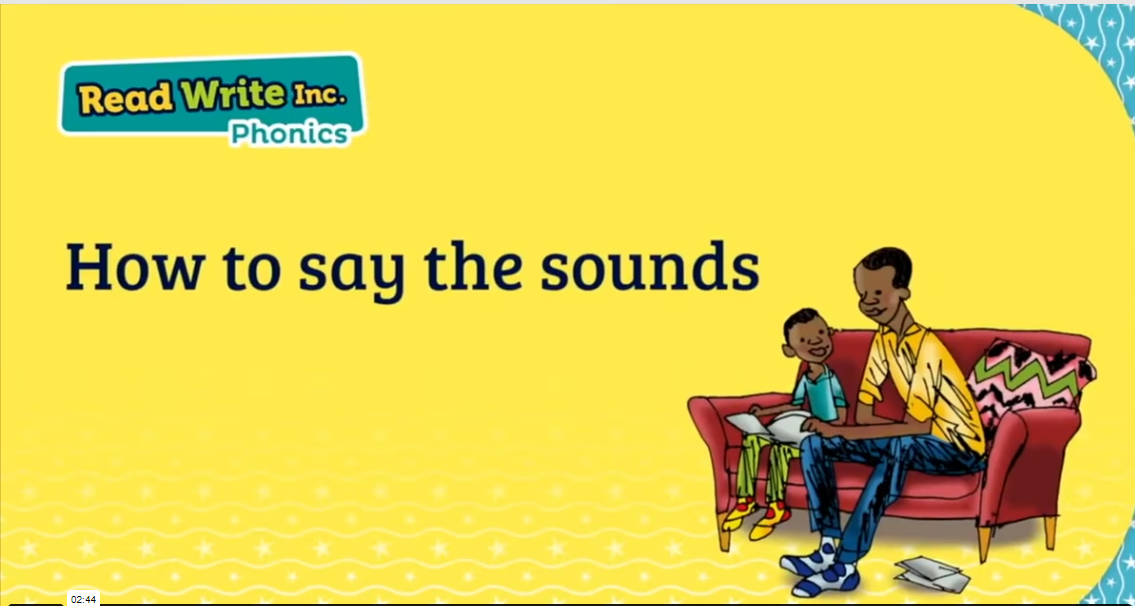Year 1
Our vision & values
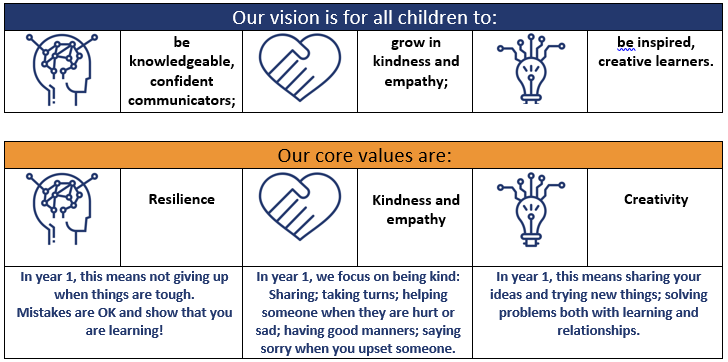
Our curriculum
PHONICS
We use a phonics programme called Read Write Inc. Children are assessed every 6 weeks and are given books to read that provide the appropriate challenge. In class, they are grouped in a way that helps to ensure they are learning well. The books they take home are read in class and it really helps if they also read them at home regularly.
A few things to note:
- Lessons are taught by teachers and teaching assistants;
- The adults change groups throughout the year;
- Children may also change groups, depending on their progress.
- Saying the sounds using ‘precise pronunication’ is important e.g. ‘ssss’ not ‘suh’ for s
This video guide helps explain how to 'sy the sounds' correctly:
READING
Alongside reading phonics books, we also have a class literature spine. We use these for what we call ‘structured storytime’, where we read the story, non-fiction text or poem and think more deeply about the themes.
Our Literature Reading Spine:

HANDWRITING
We use a programme called Letterjoin for our handwriting. It’s really useful for parents and carers to see how children learn letter formation using the app or desktop website. Children can also practise using a tablet at home.
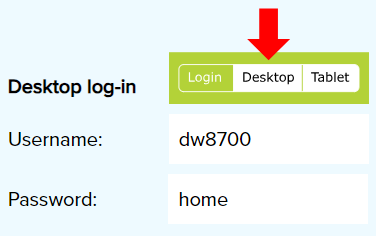


You can have a parent user manual as well. Just ask your teacher and we can give you a copy.
SPELLING
We teach spelling in Y1 primarily through the Read Write Inc. phonics programme.
During this time, children learn two key things in relation to spelling:
- To spell new or unfamiliar words using their phonic knowledge;
This can mean children spell words incorrectly but phonetically plausible e.g. peepl (people), majick (magic). This is ok and part of the learning process for most children! Most children tend to rely less on phonics to spell as they get older and read more.
- To correctly spell high frequency words that don’t necessarily follow a simple phonic pattern e.g. the, some, of ‘off by heart'
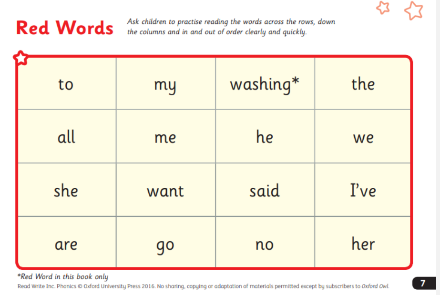
In the Read Write Inc. books, these are the red words in the opening few pages.
We use Read Write Inc to help children practice the Y1&2 Common exception words. Your child will receive a list of their spelling words which will coincide with their reading colour group. We also use “Red Rhythms” to help the children learn these words. The words are spelt out with the letter names and in a rhythm to help these words stay within working memory. Children learn to spell new words and review past words every week.
 Throughout school, we want children to apply their spelling knowledge in their independent writing. However, we also don’t want them to worry about spelling to prevent them from writing fluently. We teach them to ‘dotty underline’ a word if they are unsure of the spelling and an adult can help them when they are free.
Throughout school, we want children to apply their spelling knowledge in their independent writing. However, we also don’t want them to worry about spelling to prevent them from writing fluently. We teach them to ‘dotty underline’ a word if they are unsure of the spelling and an adult can help them when they are free.
WRITING
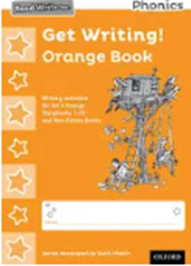
In year 1 , the children use the Get Writing! books for most of their writing. These include opportunities for sentence writing, proofreading, spelling practise, using new vocabulary, grammar and punctuation practice and independent writing tasks.
We also use little blue books for spelling and phonic practise.
As the year progresses, we start to use our A4 writing books (like the older children in Y2).
MATHEMATICS
We use a maths scheme called White Rose Maths. Learning is blocked by topic and each lesson is broken down into small steps and led by the teacher using interactive tools.
All children have a workbook for the independent phase of the lesson and each lesson usually has 4 or 5 sections, which get progressively more challenging. Not all children complete each section every lesson, which is ok.
We also have arithmetic lessons, using our own St Margaret's Lee arithmetic curriculum.
We also do maths investigations , which is often open-ended and a good challenge for our more confident mathematicians!
This is the coverage timetable for the year with White Rose:
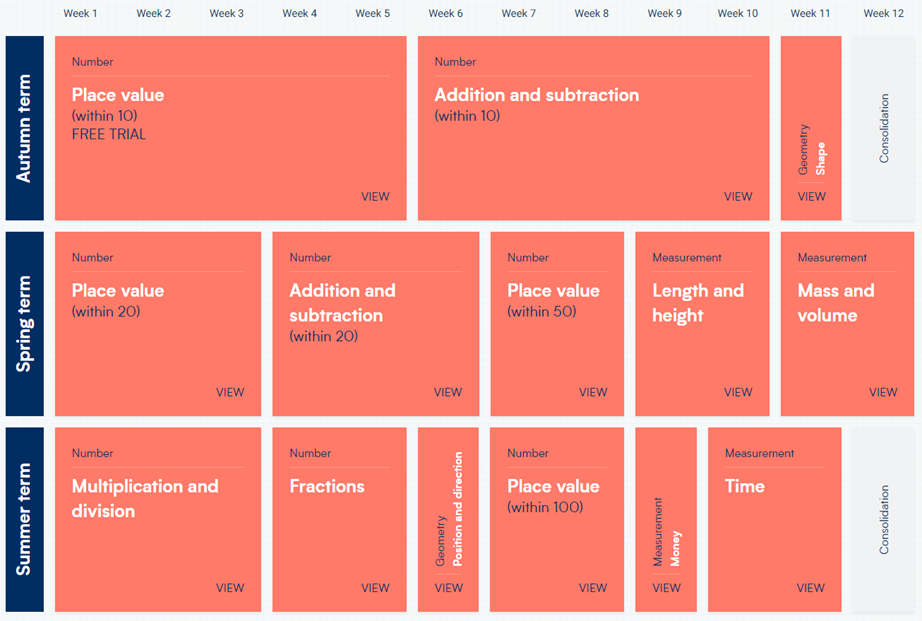
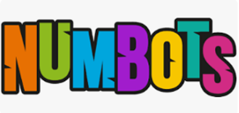 We also start to use an app called Numbots after Autumn half term. It’s an online maths journey that provides children with increasingly challenging problems. The teacher can track progress and identify misconceptions using the teacher dashboard.
We also start to use an app called Numbots after Autumn half term. It’s an online maths journey that provides children with increasingly challenging problems. The teacher can track progress and identify misconceptions using the teacher dashboard.
We recommend using it at home. Your teacher will have provided you with a login/password. Please ask if you need a reminder!
Science, Geography, History Art & DT
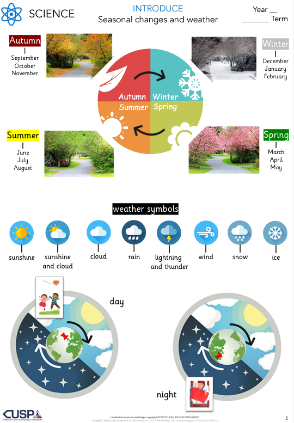 We use the CUSP curriculum for these subjects and a useful resource that we have for parents and carers is what is called a knowledge organiser for each subject.
We use the CUSP curriculum for these subjects and a useful resource that we have for parents and carers is what is called a knowledge organiser for each subject.
Essentially they show all the things the children are learning in each subject across the year. It’s really useful for a dinner time conversation! You could ask each other questions to test your child’s (and your) knowledge! Due to copyright , we can’t publish these on our website. However, you can get a pack from your class teacher or from the school office.
Computing
We follow the code.org curriculum for our coding sessions. The teacher sets the coding challenge and the children use their iPads to go through a series of problems to solve. In year 1 we also learn about what technology is, online safety and how to use iPads for learning.
RE
As a Church of England school, Religious Education is a core subject that children study each week. Our curriculum is designed to enable pupils to gain an increasingly deep understanding of both Christianity and a range of global religions and world views. RE at St. Margaret’s allows children to engage with challenging questions of meaning and purpose raised by human experience. Children are encouraged to think critically and nurture an appreciation of and respect for the differences, similarities and changes within all the religions and world views studied. Lessons contain a variety of learning activities, including debate, group work and drama, as well as studying Biblical text. They are planned around a key learning question for each half-term.
Music
We have music with Mr Brown on Wednesdays and some of us are in Rockband, which is on a Monday.
PE
We have PE on Thursdays with Mr Park and Dance on Wednesdays with Mrs Burns. However, we are active every day, doing our playground runs every Wednesday and Friday morning.
The year on a page
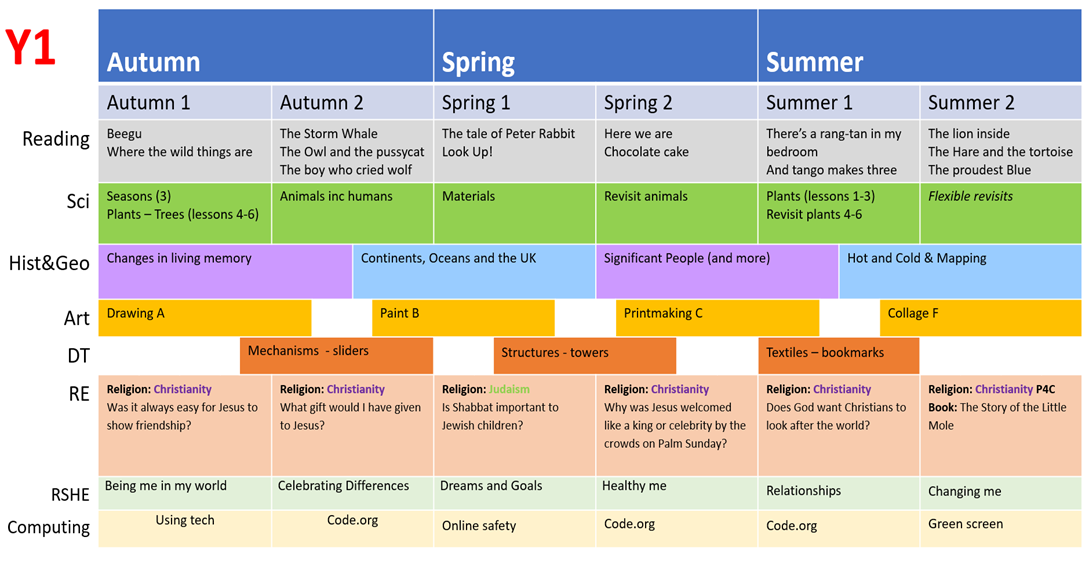
Our weekly timetable
*this is our normal routine, but sometimes timings may change
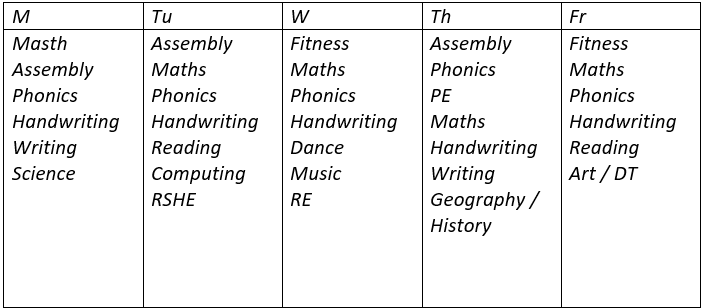
Our home learning guide
One of the key factors in our school’s success is the support families give their children at home. We truly value this partnership and know it plays a big part in helping children thrive.
At the same time, we understand the pressures many families face when it comes to homework. Some of the challenges include:
- Time constraints – Many children attend wraparound care, after-school or weekend clubs, and parents often work long hours. Fitting in homework can add unnecessary pressure.
- Confidence in supporting learning – Some parents are unsure how best to help and may worry about confusing their child by showing them methods they learned at school.
- Avoidance – In some cases, homework becomes a point of stress or is simply avoided at home.
- Limited impact – When children complete homework without guidance, they may repeat mistakes, making the task feel less purposeful.
- Technology use – We are aware that many families are trying to reduce screen time at home. While we don’t want to add to that, families are welcome to use school logins for platforms such as Times Tables Rockstars if they find them useful.
Our Approach
We strongly believe that the most valuable thing you can do at home is to support your child with regular reading. Reading together, talking about books, and building reading habits is the most impactful way to help your child progress.
If your child needs extra practice or support in other areas, we will provide this during the school day, rather than setting it as homework.
Want Homework?
If you would like homework for your child and are happy to support them in completing and checking it, we’re happy to help facilitate this. Please speak directly with your child’s class teacher to discuss what’s appropriate and how we can support you.
What is the plan for curricular and extracurricular enrichment?
Please note that this is not exhaustive. We often add in more enrichment opportunities throughout the year. These are ones we have planned already.
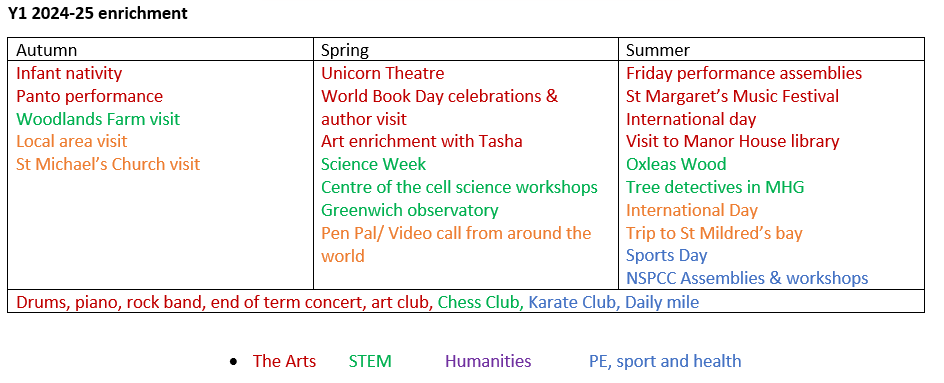
Important things to remember in Year 1
- Book changing – your child gets a new book every 3/5 days depending on their colour group
- Record reading at home in the Reading Record Book.
- Only brief messages at drop-off. We want the teacher in class with the children once the bell has rung!
- If you need to speak to the teacher for a bit longer, wait until pick-up, send an email via info@stmargaretslee.lewisham.sch.uk or arrange a meeting with the teacher.
- Trainers everyday please, no hoop ear rings and keep long hair tied back.
- Come and collect your child at pickup. We don’t want children running off because they think they can see their adult.


